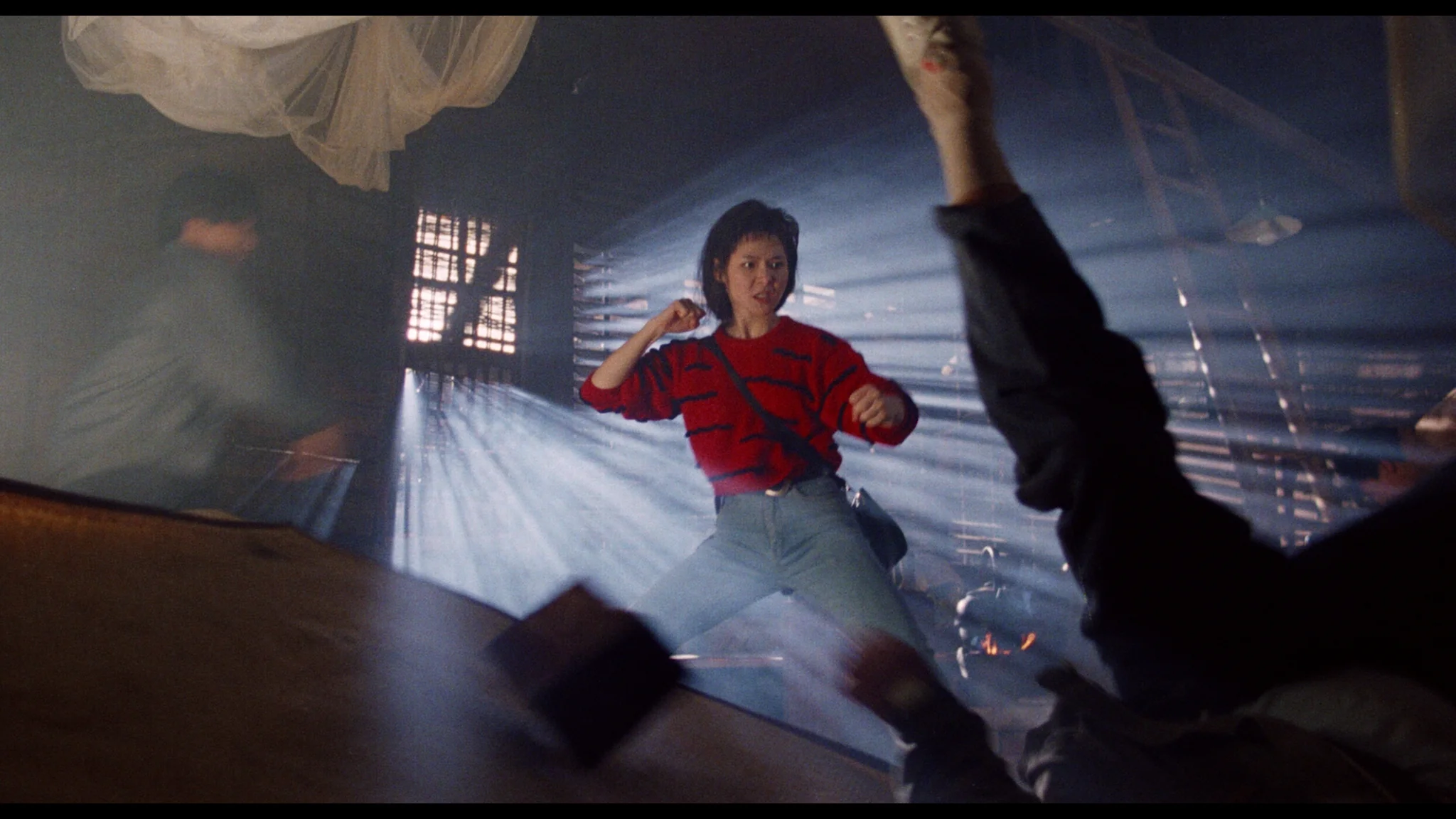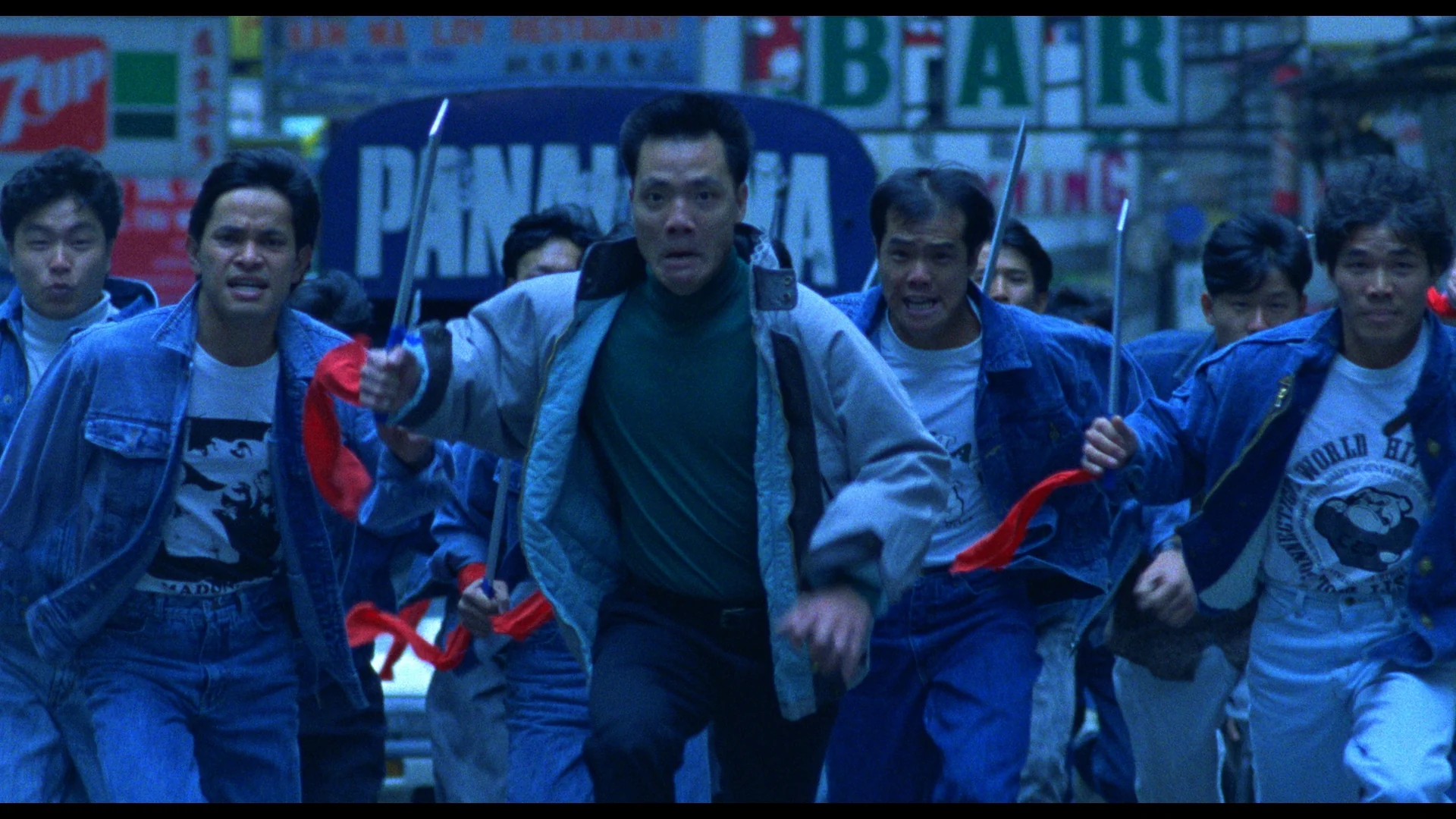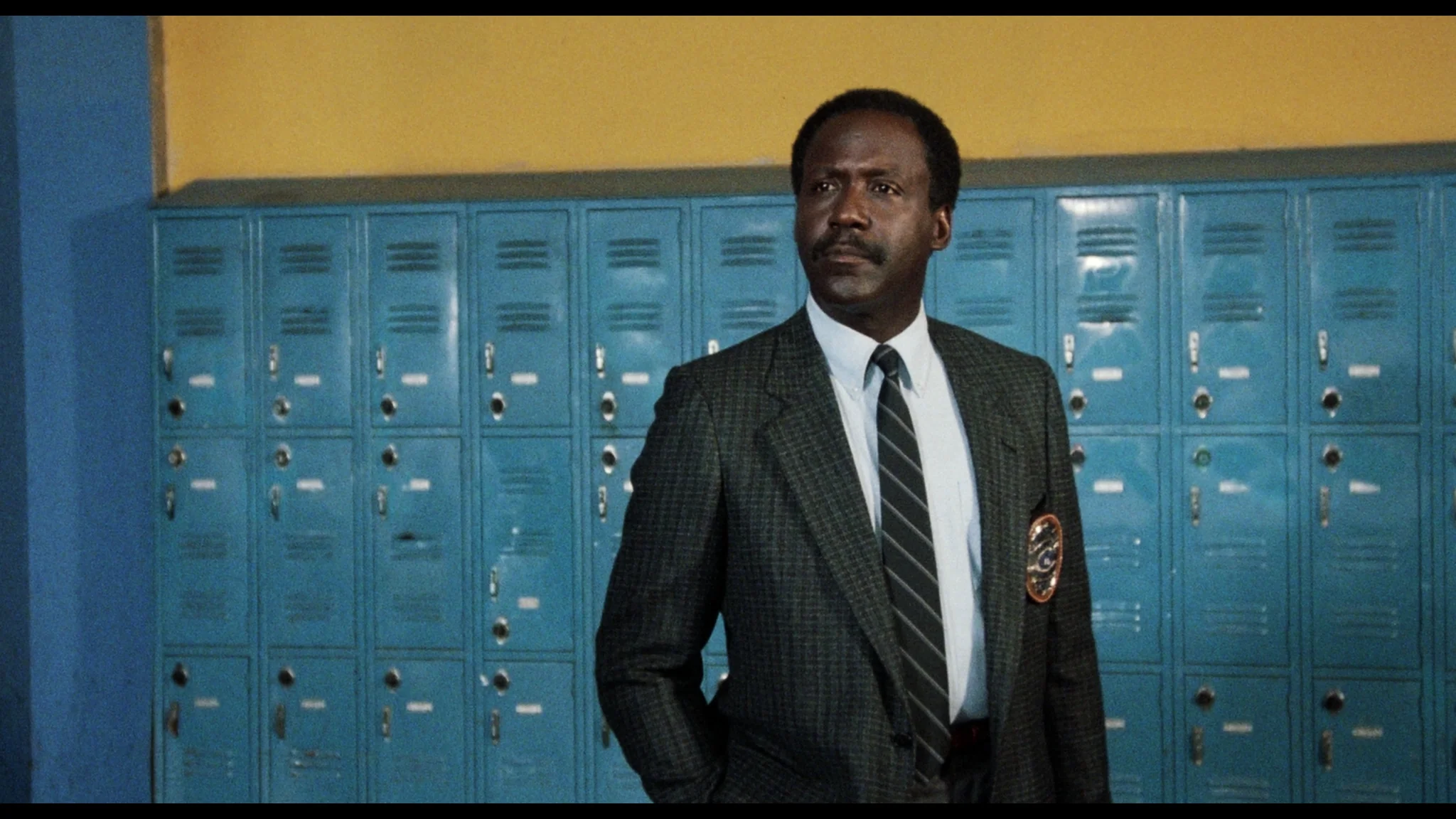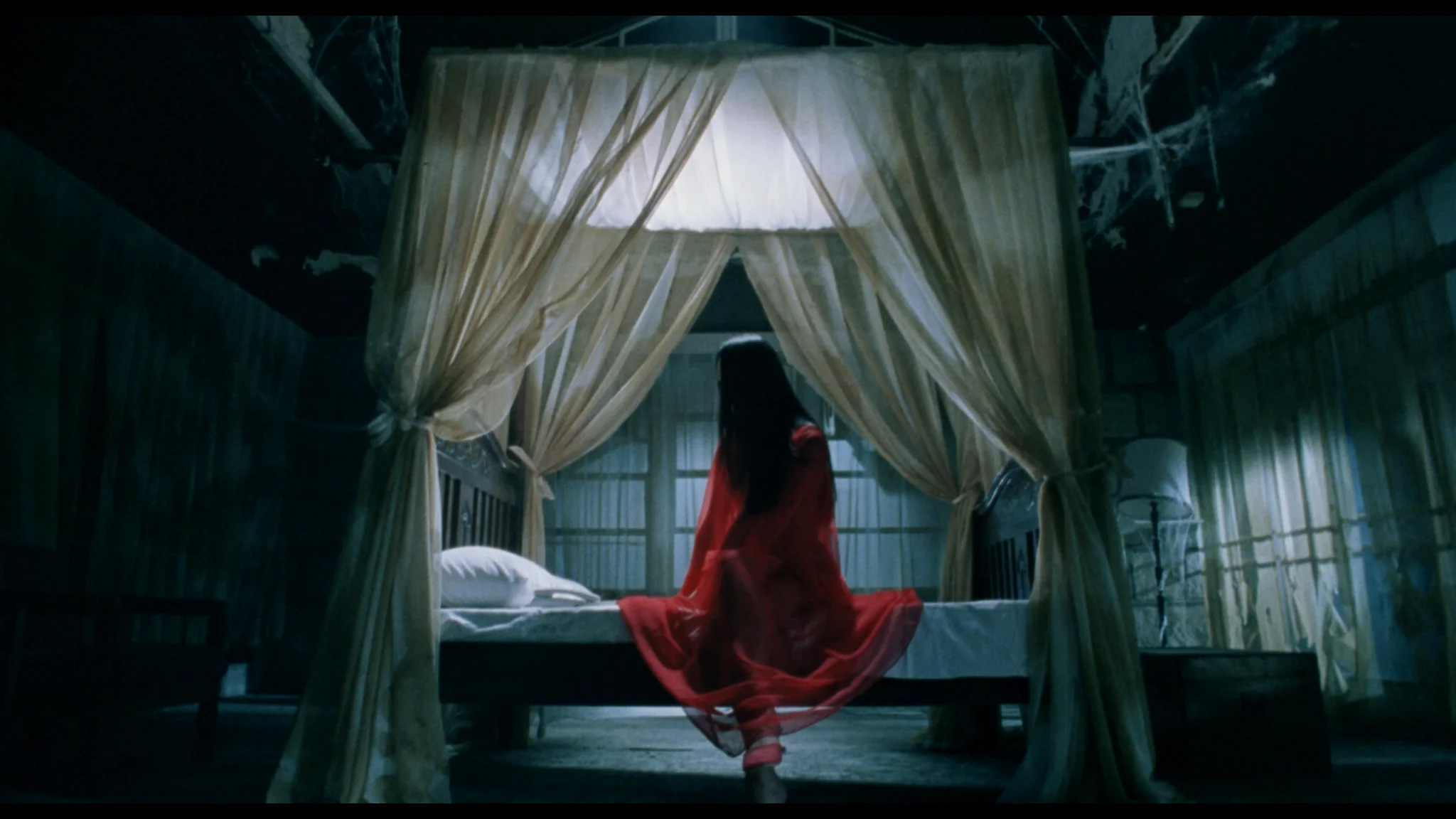Corey Yuen's Underseen WOMEN ON THE RUN Is New to Blu from Vinegar Syndrome
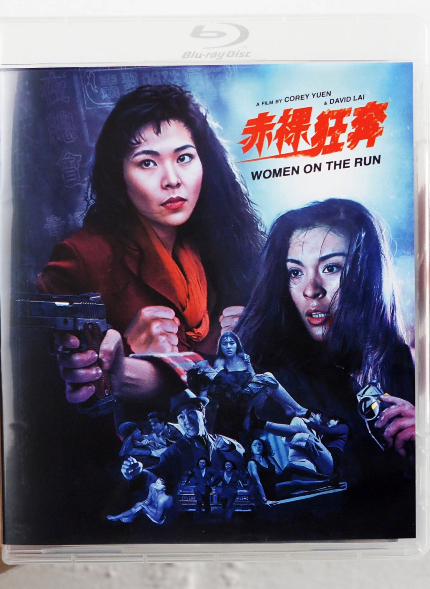
Some people love to say that physical media is dying, but those people are toxic and should be cut out of your life. Physical media is more awesome than ever, and we're here to celebrate the new 4K UHDs, Blu-rays, and DVDs making their way into the world. Now join us as we explore... recent action releases from Vinegar Syndrome Archive!
Vinegar Syndrome's Archive sub-label is described as one that "celebrates forgotten cinematic oddities from the video store era." The releases run the gamut from horror to thrillers to weird sci-fi, but the bulk of the titles fall under the action heading.
Women on the Run (1993)
A young woman with a bright future on the martial arts circuit is instead manipulated by her boyfriend into becoming a sex worker. So she kills him, obviously. Caught by the police, she's given the chance at freedom if only she'll help a detective capture a vicious crime boss. It's going to be a lot tougher assignment than either woman anticipates.
The great Corey Yuen was known for delivering numerous action gems (Yes, Madam!, Righting Wrongs) and the fights here are stellar -- but it should be noted that this Category III thriller is also incredibly mean-spirited. That's not a criticism, it's a compliment, because as cruel as the film's baddies get, the movie stays a step ahead ensuring audiences are both entertained and guaranteed some highly satisfying catharsis.
As for the action, it's wild to me that Farini Cheung and Tamara Guo are basically unknown as both women show off some solid fighting chops with Guo being a particular standout. We get shoot outs, stunts, and fights including a couple brawls that would make Viggo Mortensen proud as they face off against baddies sans clothing. It may not reach the highs of Yuen's higher profile efforts, but Hong Kong action fans -- particularly those of you open to Cat III ugliness -- will be well-served by Women on the Run.
Vinegar Syndrome's new release features a new 2K scan and restoration, presented in the original Cantonese and a Mandarin dub, and it definitely looks better than you've seen before. The limited edition (to 4000) slip case release features both a fold-out poster and a booklet. The special features include a trailer and the following:
- Commentary with Travis Woods
- Hong Kong's Thelma & Louise: An Interview with Filmmaker David Lai [16:46] - Lai discusses his start as a filmmaker, how he came to partner up with Corey Yuen, the difficulties of shooting fight scenes in the nude, training the two leads to be convincing fighters, and more.
- What You See Is What You Get: A Conversation with Producer Shan Tam and Production Manager Michael Parker [22:50] - The pair discuss the boom days of Hong Kong action cinema, meeting on the job, and bringing projects to Vancouver, Canada.
- Corey Yuen and Girls with Guns: A Video Essay by Samm Deighan [12:30] - The always welcome Samm Deighan explores the film career of the late, great Corey Yuen by way of his work in the "girls with guns" subgenre.
An Eye for An Eye (1990)
The criminal life is a draining one, so when Fung's Triad boss father is arrested, she works to move the organization towards a more legitimate and legal existence. Her efforts are short-lived, though, as some of the other members aren't all that pleased with the changes.
Director O Sing-pui's contribution to the Cat III discourse may not be as action-heavy as Yuen's film above, but he does manage at least one spectacular set piece alongside the expectedly mean-spirited cruelties. Joey Wong is the female lead here, and she does good work despite playing more of a victim character than the film's marketing might suggest. Don't come here looking for a satisfying revenge tale as the catharsis is minimal.
Instead, come here for the gritty exploration of triad violence and power plays leading up to an incredibly bloody brawl in the streets as dozens of thugs go toe to toe and machete to machete. It's this third act set piece, along with details on gang hand signals, that earned the film its Cat III rating, and while it thrills, it also serves to highlight the nihilism inherit in the triad lifestyle.
An Eye for an Eye is presented in a new Vinegar Syndrome restoration from a Hong Kong studio-supplied master, and it features the original Cantonese audio. The slip case edition is limited to 4000 copies with extras including a fold-out poster and the following.
- Commentary with Kenneth Brorsson and Phil Gillon of the Podcast on Fire Network
- New interview with director O Sing-pui [19:58] - The filmmaker recalls getting his start at a non-profit film education center, finding a mentor in Tsui Hark, and how the Hong Kong government used to have a magazine publishing details on triad culture, hand signals, and more.
- New interview with action-director Benz Kong [6:42] - Kong talks about his friendship with the director, controlling city locales while filming, the window stunt that went visibly wrong for one stunt man, and more.
- Hong Kong Cinema in the Late 80s: Between Heroic Bloodshed and Cat-III Thrillers: A Video Essay by Samm Deighan [14:52] - No one does visual essays better than Samm Deighan.
Dial D for Demons (2000)
It's vacation time, and a group of friends decide to hit up a small island for some summer fun. Fools. They discover too late that the condo they're staying in has a history, and soon they're trapped in a nightmare involving ghosts, suicide, and charcoal.
Billy Tang is a director whose name invokes fear and titillation in the hearts of Hong Kong cinema fans as the man responsible for three of the more heinously entertaining Category III thrillers ever made. Dr. Lamb, Run and Kill, and Red to Kill are grotesquely violent, obscenely salacious rides into darkness, and they reveal Tang as a madman behind the wheel. Dial D for Demons, by contrast, is a pretty dull trip from beginning to end.
The film is every bit a PG-13 nod to J-horror hits of the time, but Tang never finds the energy to find scares, thrills, or anything resembling genre weight. There's a ghostly backstory, haunted pagers (?), and plenty of deaths, but it's all just so damn boring. Tang being Tang, we do get scantily clad young women shot from low angles -- the better to capture butt cheeks spilling from their shorts -- but it all remains chaste and bloodless. It's also a film in dire need of practical effect gags as it feels like a spiritual sibling to the likes of Demon Wind or Spookies, but again it comes up short.
The slip case edition is limited to 4000 copies and includes a fold-out poster, and while the film may feel like a missed opportunity, Vinegar Syndrome's new 2K scan and restoration still affords it a solid-looking release. Tang shot the movie on film, and it's noticeable, but the low budget prevents it from ever really shining on the visual front. The film is presented with both Cantonese and Mandarin audio options, a trailer, and the following special features.
- Commentary with Kenneth Brorsson and Phil Gillon of the Podcast on Fire Network
- Not One of Those Movies: Actor Terence Yin on the Making of Dial D for Demons [13:01] ' Yin talks about how he was still a young, raw actor at the time of this film's making, observes that he only became an actor because both of his parents were, and mentions that the big draw for taking the job was the cast and director. He goes on to share some interesting thoughts on Billy Tang, shooting on film, the very real string of charcoal suicides that inspired the film, and more.
- The Bloody Legacy of Billy Tang: A Video Essay by Film Historian Samm Deighan [9:58] - The terrifically knowledgeable Deighan breaks down Tang's film career including his early works, his essential entries in the Cat III canon, and the less memorable work that followed.
Crack House (1989)
A little ditty, about Melissa and Rick, one went up for murder while the other is put on the stick. Okay, I'm no song writer, but this is the tale of high school sweethearts who see their lives torn apart by drugs and violence. Rick's caught up in gang violence, and Melissa gets hooked on crack to the point that she becomes a sex slave.
Look, you don't come to a movie called Crack House for a subtle commentary on America's war on drugs. You come for quick and dirty violence, a great use of Los Angeles locations you won't see from the tour bus, and a cameo by Jim Brown as a brutal drug lord overseeing his tiny fiefdom with violence and cruelty. Law enforcement is absent until the final reel when the LAPD gets to unleash their expensive, military-grade armored vehicles on doomed thugs, so consider that the moral of the story.
Cannon Films, a genre stalwart throughout the 80s, was already on its way out when it released this indie effort, but the studio's scent is still evident. Director Michael Fischa arguably peaked with his debut feature, 1988's Death Spa, but he shows an eye for caricature and explosive action on a budget. It's not enough to make this a good movie, but there's something to be said for its embrace of harsh truths in an exploitative light.
Crack House is newly scanned and restored in 2K, and the slip case edition is limited to 4000 copies. The extras include the following.
- Shooting Crack House: An Interview with Cinematographer Arledge Armenaki [12:54] - The experienced director of photography talks about the skills required for the job, how he landed this film, his previous experience covering the world of street gangs, and more.
- Gang Territory: An Interview with Actor Gregg Thomsen [9:38] - From model work to being a beach boy, Thomsen recalls heading to Hollywood to audition with Burt Reynolds, competing with real "gang bangers" for the role, how the film was originally called Street Dreams, filming in actual gang territory, and more.
- Hitting the Streets: The Locations of Crack House [3:56] - A brief look at the filming locations, then and now.



